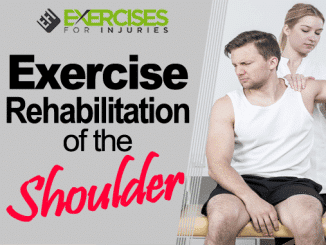
Shoulder Injury in Throwing Athletes
Shoulder injuries are common in throwing athletes, but they can be prevented with proper training and conditioning.
First, athletes should strengthen their rotator cuff muscles to help protect the shoulder joint. They should also practice proper throwing techniques and avoid repetitive overhead motions, stressing the shoulder. Finally, athletes should wear protective gear such as a padded vest during practices and games.
If you play sports that require frequent overhead motions, such as volleyball or baseball. Be sure to avoid unnecessary shoulder injuries. If you play sports that require periodic overhead movements, such as volleyball or baseball, avoid unnecessary shoulder injuries.
Wearing padded vests and using proper techniques can help to prevent shoulder injuries in throwing athletes. Wearing padded vests and using appropriate strategies can help to prevent shoulder injuries in throwing athletes.
I have another interview for you today. It is with Eric Cressey. Eric is the author of a great resource for fitness professionals, called Assess and Correct. Here is a testimonial that I sent Eric about the great resource he created:
Now to the interview:
Rick Kaselj: Hello, this is Rick Kaselj from ExercisesForInjuries.com with another interview with fitness and performance professional. Today I am interviewing for you, Eric Cressey. I will get Eric to do a quick intro about himself.
Eric Cressey:
Sure thing. I own my own facility, it’s called Cressey Performance. It’s about 40 minutes west of Boston. An overwhelming majority of our clients, about 80 to 85 percent of them are baseball players. Basically, pitchers are about 60 percent of professional baseball players. So it stands to reason that a huge chunk of my clients all throws a baseball a big chunk out of the year.
We need to know how to manage. And how to watch for certain things that creep up and cause shoulder and elbow injuries. One of the things that we are going to talk about today is some of the first things that I look at in the overhand throwing population.
How to Assess Shoulder Injury in Throwing Athletes?
The biggest one that I see, and this isn’t just specific to the overhand throwing population. You’ll see it in other ones as well. It is important to know how to assess it, are we watch for a big shoulder internal rotation deficit. You’ll see some internal rotation deficit that’s actually normal, it’s abbreviated GHID, glenohumeral internal rotation deficit.
How we’ll assess this is we’ll put people on their backs and stabilize the scapula. We’ll basically assess the shoulder’s internal and external rotation at 90 degrees of abduction. So they’ll be on their back, on a table. We’ll get them through some range of motion tests.
What you’ll often find is, in a throwing shoulder, almost always, there’s a margin decrease in internal rotation and an increase in external rotation. Their total arch of motion is internal and external rotation. A healthy shoulder should be symmetrical from side to side.
So, if I measure your left side and you have say, 60 degrees of internal rotation and 120 degrees of external rotation, you’ve got 180 degrees of total motion. I might go over to your right side if you’re a right-handed pitcher. And you might have 10 degrees of internal rotation and 130 degrees of external rotation. We know that you only have 140 degrees on that side, and we know that we got to work pretty hard to get a lot of that internal rotation back to get you symmetrical, in terms of total motion.
Conclusion
The big thing that we watch out for is that the total arch is even in terms of 180 degrees or whatever that total motion figure is. It is okay if that arch of motion comes in a different place. We know that they’re going to have a little more external rotation and a little less internal on their throwing side.
We can talk about some of the bone changes that happen to make that happen, and things like that. Really, the take-home message is that internal rotation deficit is a normal thing in that throwing population, but you don’t want to let it get out of hand because that’s when guys tend to have problems.
A little bit geeky, probably. New stuff to a lot of people but something we have to watch for every day and learn how to assess and learn how to address.
This is just a taste of the interview I did with Eric. If you would like the full interview, then if register for the Nuts and Bolts of Corrective Exercise course. coming up, I will send it to you as part of your registration. For more information on the course,
If you liked this fitness education interview, you can see and listen to more by clicking here.
Rick Kaselj, MS





